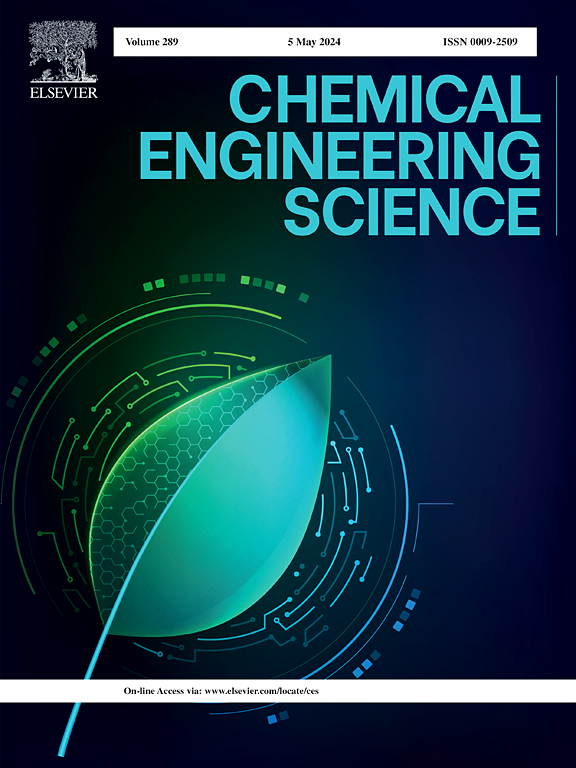负载Pt的高导电性氮掺杂碳/3D石墨烯复合材料用于甲醇氧化
IF 4.3
2区 工程技术
Q2 ENGINEERING, CHEMICAL
引用次数: 0
摘要
直接甲醇燃料电池(dmfc)的传统阳极Pt电催化剂面临着Pt纳米颗粒迁移和分离的趋势等挑战。本文通过原位生长的ZIF-67/3D氧化石墨烯(3DGO)衍生出Co/N-PC/3DG三维网络结构,并将Pt纳米颗粒加载到Co/N-PC/3DG上,成功制备了Pt/Co/N-PC/3DG。系统研究了复合碳载体Co/N-PC/3DG与Pt负载复合碳载体Pt/Co/N-PC/3DG在甲醇电氧化中的结构性能相关性。Pt/Co/N-PC/3DG-800表现出优异的催化性能,最大电流密度为553 mA·mg - 1Pt,是商用Pt/C (277 mA·mg - 1Pt)的2倍。在7200 s时培评价后,催化剂的电流密度仍然保持在38.4 mA·mg - 1Pt,比Pt/C (3.4 mA·mg - 1Pt)提高了11倍。增强的性能源于其结构优化的3D导电框架,其中分层孔隙度和相互连接的碳网络协同加速了离子扩散动力学和电子传递效率。此外,再加上其高氮掺杂含量和扩大的比表面积,这种结构确保了均匀的铂纳米颗粒分散和强大的锚定,最大限度地提高了其催化效率。本文章由计算机程序翻译,如有差异,请以英文原文为准。
Highly conductive nitrogen-doped carbon/3D graphene composite loaded with Pt for methanol oxidation
Conventional anode Pt electrocatalysts for direct methanol fuel cells (DMFCs) face challenges including the tendency of Pt nanoparticles to migrate and detach, and so on. In this paper, Pt/Co/N-PC/3DG were successfully prepared by loading Pt nanoparticles onto a Co/N-PC/3DG three-dimensional network structure derived from ZIF-67/3D graphene oxide (3DGO), which was obtained by in-situ growth. The structure-performance correlation of the composite carbon support Co/N-PC/3DG and its Pt-loaded counterpart (Pt/Co/N-PC/3DG) for methanol electrooxidation was systematically investigated. Pt/Co/N-PC/3DG-800 demonstrated outstanding catalytic capacity, exhibiting a maximum current density of 553 mA·mg−1Pt, which was 2-fold the performance observed in commercial Pt/C (277 mA·mg−1Pt). After 7200 s of chronoamperometric evaluation, the catalyst still retained a current density of 38.4 mA·mg−1Pt, achieving an 11-fold enhancement over Pt/C (3.4 mA·mg−1Pt). The enhanced performance stemmed from its architecturally optimized 3D conductive framework, where the hierarchical porosity and interconnected carbon networks synergistically accelerated ion diffusion kinetics and electron transport efficiency. Additionally, coupled with its high nitrogen-doping content and expanded specific surface area, this architecture ensured uniform Pt nanoparticle dispersion and robust anchoring, maximizing its catalytic efficiency.
求助全文
通过发布文献求助,成功后即可免费获取论文全文。
去求助
来源期刊

Chemical Engineering Science
工程技术-工程:化工
CiteScore
7.50
自引率
8.50%
发文量
1025
审稿时长
50 days
期刊介绍:
Chemical engineering enables the transformation of natural resources and energy into useful products for society. It draws on and applies natural sciences, mathematics and economics, and has developed fundamental engineering science that underpins the discipline.
Chemical Engineering Science (CES) has been publishing papers on the fundamentals of chemical engineering since 1951. CES is the platform where the most significant advances in the discipline have ever since been published. Chemical Engineering Science has accompanied and sustained chemical engineering through its development into the vibrant and broad scientific discipline it is today.
 求助内容:
求助内容: 应助结果提醒方式:
应助结果提醒方式:


